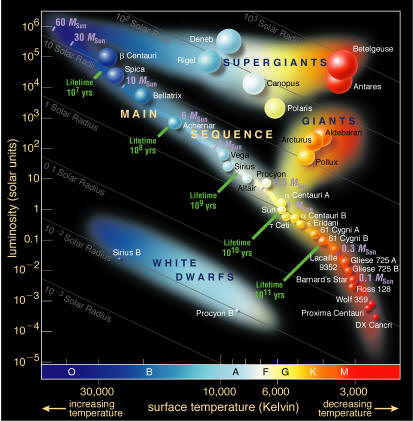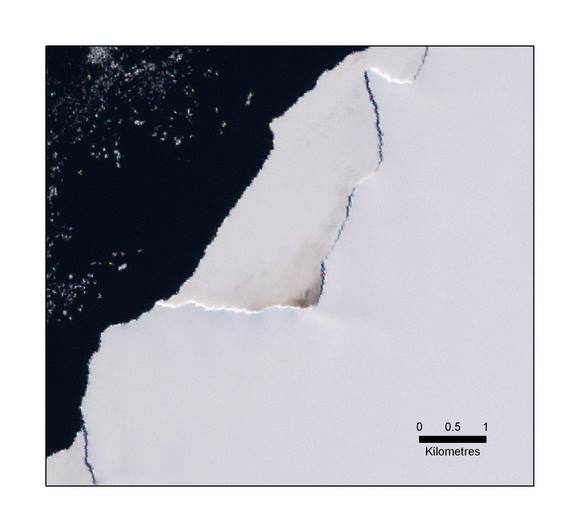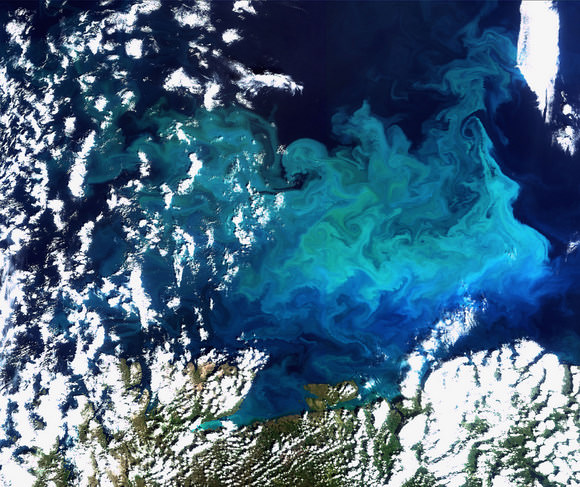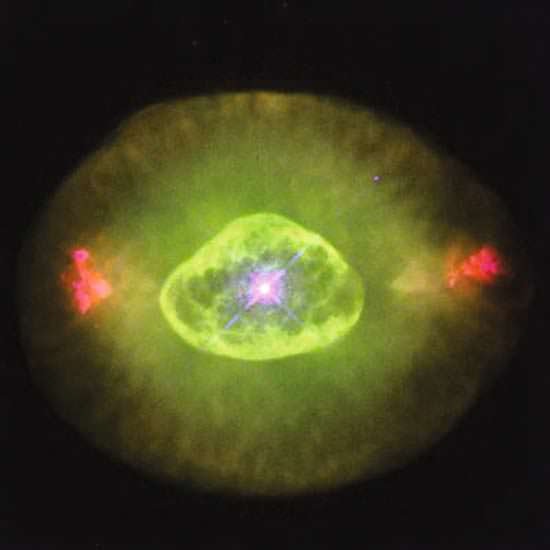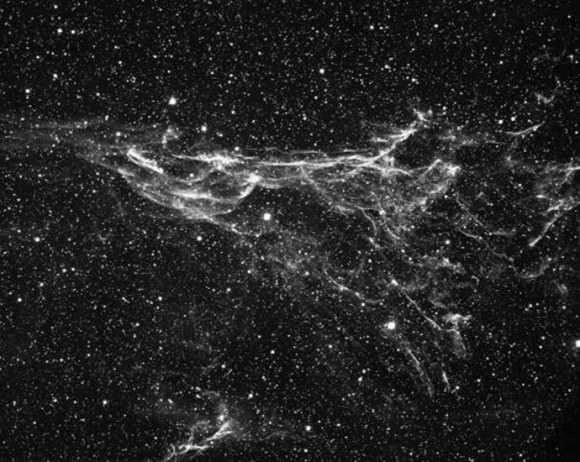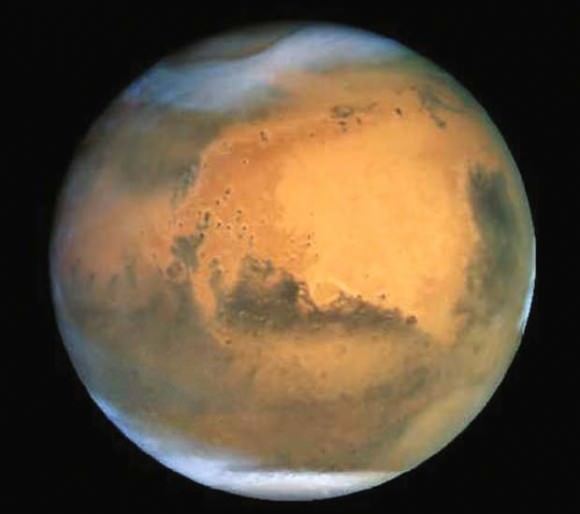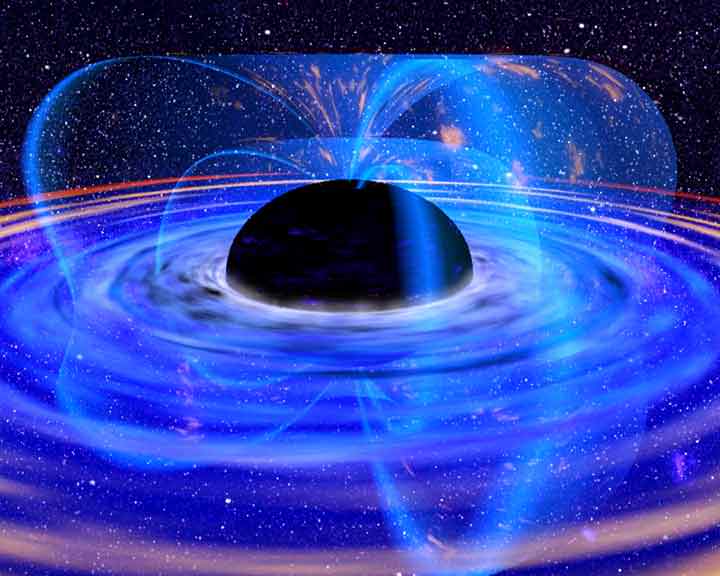There’s nothing prettier than watching the space shuttle land. Sure, it drops like a rock, a piano, a safe; but when the vehicle makes the final turn and lines up with the runway, and then the commander sticks the landing like Rick Sturckow did tonight, it’s a work of art. If you missed the landing in real time, here’s a great video of Discovery’s landing at Edwards Air Force Base in California, at 5:53 PDT on Friday, ending the 14-day mission to the International Space Station.
Continue reading “Space Shuttle Discovery Returns Home (Video)”
Hertzsprung-Russell diagram
[/caption]
Stars can be big or small, hot or cool, young or old. In order to properly organize all of the stars out there, astronomers have developed an organizational system called the Hertzsprung-Russell Diagram. This diagram is a scatter chart of stars that shows their absolute magnitude (or luminosity) versus their various spectral types and temperatures. The Hertzsprung-Russell diagram was developed by astronomers Ejnar Hertzsprung and Henry Norris Russell back in 1910.
The first Hertzsprung-Russell diagram showed the spectral type of stars on the horizontal axis and then the absolute magnitude on the vertical axis. Another version of the diagram plots the effective surface temperature of the star on one axis and the luminosity of the star on the other.
By using this diagram, astronomers are able to trace out the life cycle of stars, from young hot protostars, through the main sequence phase and into the dying red giant phases. It also shows how temperature and color relate to the stars at various stages in their lives.
If you look at an image of a Hertzsprung-Russell diagram, you can see there’s a diagonal line from the upper left to the lower right. Almost all stars fall along this line, and it’s known as the main sequence. In general, as luminosity goes down, temperature goes down as well. But there’s a branch that goes off horizontally at the 100 solar luminosity mark. These are the red giant stars nearing the end of their lives. They can be bright and cool, because they’re so large. But this stage usually only lasts a few million years.
Astronomers can also use the Hertzsprung-Russell diagram to estimate how far away stellar clusters are from Earth. By mapping out all the stars in the cluster and grouping them together and comparing them to groups of stars with known distances.
We have written many articles for Universe Today about the star life cycle. Here’s an article about the cluster M13, and how astronomers use the Hertzsprung-Russell diagram to study it.
Here are some good resources on the Internet for Hertzsprung-Russell diagram. Here’s a very simple version of the diagram from the University of Oregon, and here’s more information.
We have recorded an episode of Astronomy Cast about kinds of stars. Listen to it here, Episode 75 – Stellar Populations.
References:
http://cse.ssl.berkeley.edu/segwayed/lessons/startemp/l6.htm
http://cas.sdss.org/dr6/en/proj/advanced/hr/
LCROSS Impact Site on Moon Announced: Cabeus A
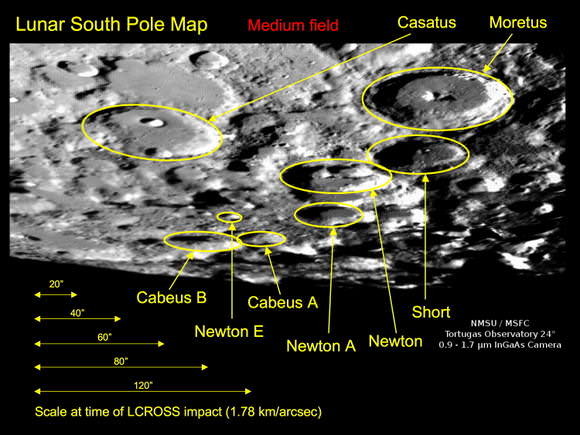
[/caption]
On October 9, 2009, at 7:30 a.m. EDT professional and amateur astronomers alike will be focusing their telescopes on the south pole of the Moon, hoping to see a little fireworks. Or more accurately, they are hoping to see ice. NASA will be sending the upper stage of a Centaur rocket to impact a permanently shadowed crater, along with the Lunar Crater Observation and Sensing Satellite, or LCROSS which will fly into the plume of dust left by the impact and measure the properties of the dust to look for water ice hidden inside the crater. LCROSS will collide with the lunar surface. Team scientists have been debating what crater would be the optimal location for the impact, and today they made their announcement: Cabeus A.
And just to clarify, the spacecraft will impact the Moon, NOT bomb it. No detonations involved.
The LCROSS team selected Cabeus A based on a set of conditions that include proper debris plume illumination for visibility from Earth, a high concentration of hydrogen, and mature crater features such as a flat floor, gentle slopes and the absence of large boulders.
“The selection of Cabeus A was a result of a vigorous debate within the lunar science community that included review of the latest data from Earth-based observatories and our fellow lunar missions Kaguya, Chandrayaan-1, and the Lunar Reconnaissance Orbiter,” said Anthony Colaprete, LCROSS project scientist and principle investigator at NASA’s Ames Research Center in Moffett Field, Calif. “The team is looking forward to the impacts and the wealth of information this unique mission will produce.”
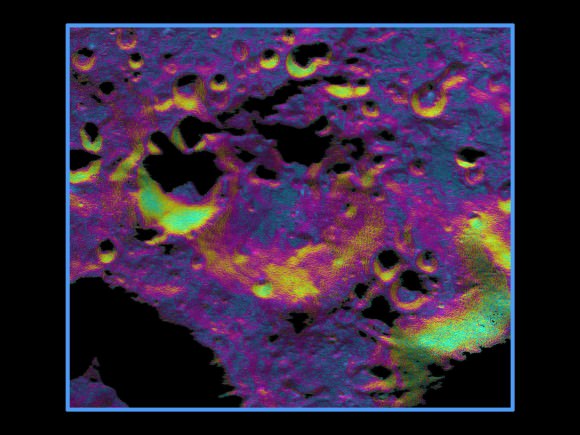
“LCROSS will shepherd the Centaur to the precise orbit, and accelerate it into the moon,” said LCROSS project scientist Tony Colaprete. “The two will separate, with LCROSS following the Centaur by four minutes, taking live “bent pipe” measurements, sending back live video (which will be shown live via webcast) taking measurements of the lunar regolith characteristics, looking for lunar water vapor or ice characteristics, then impacting the lunar surface itself. LCROSS will be a smashing success.”
Observatories involved the observing campaign include the Infrared Telescope Facility and Keck telescope in Hawaii; the Magdalena Ridge and Apache Ridge Observatories in New Mexico and the MMT Observatory in Arizona; the newly refurbished Hubble Space Telescope; and the Lunar Reconnaissance Orbiter, among others.
“These and several other telescopes participating in the LCROSS Observation Campaign will provide observations from different vantage points using different types of measurement techniques,” said Jennifer Heldmann, lead for the LCROSS Observation Campaign at Ames. “These multiple observations will complement the LCROSS spacecraft data to help determine whether or not water ice exists in Cabeus A.”
The impact should be visible to people in the United States and Canada — the farther west the better.
Learn about the observing campaign for amateur astronomers here.
During a media briefing Sept. 11, Daniel Andrews, LCROSS project manager at Ames, provided a mission status update indicating the spacecraft is healthy and has enough fuel to successfully accomplish all mission objectives despite an anomaly that caused the spacecraft to spend an excessive amount of fuel.
Andrews also announced the dedication of the LCROSS mission to the memory of legendary news anchor, Walter Cronkite, who provided coverage of NASA’s missions from the beginning of America’s manned space program to the age of the space shuttle.
Source: NASA
Albedo Effect
Astronomers define the reflectivity of an object in space using a term called albedo. This is the amount of electromagnetic radiation that reflects away, compared to the amount that gets absorbed. A perfectly reflective surface would get an albedo score of 1, while a completely dark object would have an albedo of 0. Of course, it’s not that black and white in nature, and all objects have an albedo score that ranges between 0 and 1.
Here on Earth, the albedo effect has a significant impact on our climate. The lower the albedo, the more radiation from the Sun that gets absorbed by the planet, and temperatures will rise. If the albedo is higher, and the Earth is more reflective, more of the radiation is returned to space, and the planet cools.
An example of this albedo effect is the snow temperature feedback. When you have a snow covered area, it reflects a lot of radiation. This is why you can get terrible sunburns when you’re skiing. But then when the snow covered area warms and melts, the albedo goes down. More sunlight is absorbed in the area and the temperatures increase. Climate scientists are concerned that global warming will cause the polar ice caps to melt. With these melting caps, dark ocean water will absorb more sunlight, and contribute even more to global warming.
Earth observation satellites are constantly measuring the Earth’s albedo using a suite of sensors, and the reflectivity of the planet can actually be measured through Earthshine – light from the Earth that reflects off the Moon.
Different parts of the Earth contribute to our planet’s overall albedo in different amounts. Trees are dark and have a low albedo, so removing trees might actually increase the albedo of an area; especially regions typically covered in snow during the winter.
Clouds can reflect sunlight, but they can also trap heat warming up the planet. At any time, about half the Earth is covered by clouds so their effect is significant.
Needless to say, the albedo effect is one of the most complicated factors in climate science, and scientists are working hard to develop better models to estimate its impact in the future.
We have written many articles about the albedo effect for Universe Today. Here’s an article discussing the albedo of the Earth, and how decreasing Earthshine could be tied to global warming.
There are some great resources out on the Internet as well. Check out this article from Scientific American Frontiers, and some cool photos of different colors of ice.
We have recorded a whole episode of Astronomy Cast just about the Earth. Listen to it here, Episode 51: Earth.
Reference:
Encyclopedia of Earth
The Big Bang Writ Little
If you are into Twitter (as I am), you might enjoy this: New Scientist challenged their readers to encompass the Big Bang into a Tweet. That means the description of the event that started everything that is needs to be 140 characters or less –and actually it was only 133 characters because to qualify, the Tweet had to include the #sci140 hashtag so the folks at New Scientist could gather them all together. Some went the complete science route by trying to summarize the physics (at least one person fit in the equation for Hubble’s Law), others quoted (“In the beginning the universe was created. This has made a lot of people very angry and has been widely regarded as a bad move.” — Douglas Adams), others took a religious bend, and still others described the event in how it might sound (boom, bang, kaboom or tweeeet). Here’s my favorite:
@newscientist < ∞ #sci140 yanikproulx
A fun exercise in brevity.
Here’s the rest of their top 10:
Timeless energy, / all dressed up, no place to go: / had to create space. / – #BigBang #haiku #sci140 – haiQ
God said delB=0 etc, & then light (sym breaking), separation light from darkness (recombination), man created from dirt (evolution) #sci140 – dmadance
#sci140 starburst, molecule, amino acid, protein, cell development, cell division, sex, technology, war, religion, OK magazine. – jonotrumpeto
@newscientist #sci140 Antimatter and matter duke it out. Matter wins 1 billion and one to 1 billion. The matter left expands and makes us. – zeroentropy
#sci140 A place for everything, and everything in one place. Then — kaboom, everything all over the place. – tui4
@newscientist The Big Bang: the moment the universe vanishes when extrapolating its expansion backwards into the past #sci140 – hubi1857
For t<0 some say there was no matter, others say it does not matter. For t>0 its a matter of life and death – as a matter of fact #sci140 – thebeerhunter
an argument between the 9th and 10th dimensions overspilled into the 1st, 2nd, 3rd and 4th. #sci140 – AlexStavrinides
The Big Bang: Basically a ballooning of bosons, belatedly bloating into our beautiful universe. Brought to you by the letter ‘B’. #sci140 – CoyoteTrax
Source: New Scientist
Earth From Space: Plankton Bloom
[/caption]
What a gorgeous shot of our blue planet! This Envisat satellite image taken on August 19, 2009 captures a plankton bloom larger than the country of Greece stretching across the Barents Sea off the tip of northern Europe. The land visible across the bottom of the image belongs to Norway (left) and Russia’s Murmansk Oblast.
Plankton, the most abundant type of life found in the ocean, are microscopic marine plants that drift on or near the surface of the sea. Microscopic plankton have been called ‘the grass of the sea’ because they are the basic food on which all other marine life depends.
The colorful blossoming bloom in the Barents Sea, a rather deep shelf sea with an average depth around 230 m, is approximately 136,000 sq km. In comparison, Greece has a land area of 131,940 sq km.
For more about this image, see this page from ESA.
Weekend SkyWatcher’s Forecast – September 11-13, 2009
Greetings, fellow SkyWatchers! Now that the Moon is backing off the early evening skies, it’s time to enjoy some more elusive targets – like ones that are gone in the “blink” of an eye, or “veiled” in mystery… While you might think all of these are telescope-only domain, if you’ve got dark skies and eyes, you might be surprised! Why not take some time this weekend to get out your telescopes or binoculars and have some fun? There’s some tasty summer treats waiting on you, and I’ll see you in the backyard…
 Friday, September 11, 2009 – Today we celebrate the birthday of Sir James Jeans. Born in 1877 on this date, English-born Jeans was an astronomical theoretician. At the beginning of the twentieth century, Jeans worked out the fundamentals of the process of gravitational collapse. This was an important contribution to the understanding of the formation of solar systems, stars, and galaxies.
Friday, September 11, 2009 – Today we celebrate the birthday of Sir James Jeans. Born in 1877 on this date, English-born Jeans was an astronomical theoretician. At the beginning of the twentieth century, Jeans worked out the fundamentals of the process of gravitational collapse. This was an important contribution to the understanding of the formation of solar systems, stars, and galaxies.
While we are studying some of the summer’s finest objects, we’d be remiss if we didn’t look at another cosmic curiosity—the ‘‘Blinking Planetary.’’ Located a couple of degrees east of visible star Theta Cygni, and in the same lower power field as 16 Cygni (RA 19 44 48 Dec +50 31 30), it is formally known as NGC 6826.
Viewable in even small telescopes at mid-to-high power, you’ll learn very quickly how its name came about. When you look directly at it, you can only see the central 9th magnitude star. Now, look away. Focus your attention on visual double 16 Cygni. See that? When you avert, the nebula itself is visible. This is actually a trick of the eye. The central portion of our vision is more sensitive to detail and will only see the central star. At the edge of our vision, we are more likely to see dim light, and the planetary nebula appears. Located around 2,000 light-years from our Solar System, it doesn’t matter if the Blinking Planetary is a trick of the eye or not. . .because it’s cool! Also known as Herschel IV.73 and Caldwell object 16, this tiny planetary shows an abundance of carbon and dust pockets in its structure. It skyrocketed to fame when viewed by the Hubble Space Telescope (HST), which revealed the mysterious red ‘‘FLIERS,’’ whose bow shocks point toward this planetary nebula instead of away
from it!
Saturday, September 12, 2009 – Today we note two births: Arthur von Auwers (1838), who calculated stellar distances; and Guillaume Le Gentil (1725), who was a frustrated Venus transit observer! Tonight, do your best not to be frustrated as we encourage those with larger binoculars and telescopes to head for a dark sky location. We are going on a quest… the quest for the holy ‘‘Veil.’’
By no means is the Veil Nebula Complex an easy one. The brightest portion, NGC 6992 (RA 20 56 20 Dec +31 41 48), can be spotted in large binoculars, and you can find it just slightly south of a central point between Epsilon and Zeta Cygni. NGC 6992 is much better in a 6″ scope, however, and low power is essential to see the long ghostly filaments that span more than a degree of sky.
About 2.5 degrees west-southwest, and incorporating star 52, is another long narrow ribbon of what may be classified as a supernova remnant. When aperture reaches the 12? range, so does the true breadth of this fascinating complex. It is possible to trace these long filaments across several fields of view. They sometimes dim and at other times widen, but like watching a surreal solar flare, you will not be able to tear your eyes away from this area. Another undesignated area lies between the two NGCs, and the whole 1,500-light-year-distant area spans over 2.5 degrees. Sometimes known as the Cygnus Loop, it’s definitely one of late summer’s finest objects.
Sunday, September 13, 2009 – Your first challenge for this morning is to check out the last quarter Moon and look for Mars nearly touching it!
On this date in 1922, the highest air temperature ever recorded at the surface of Earth occurred. The measurement was taken in Libya and burned in at a blistering 136F (58C), but did you know that the temperatures in the sunlight on the Moon are double that? If you think the surface of the Moon is a bit too warm for comfort, then know surface temperatures on Mars average only about 80F (27C) during the day!
Tonight, let’s take the time to hunt down an often overlooked globular cluster—M56. Located roughly midway between Beta Cygni and Gamma Lyrae (RA 19 15 35.50 Dec +30 11 04.2), this Class X globular was discovered by Charles Messier in 1779 on the same night he discovered a comet and was later resolved by Herschel.
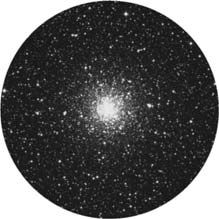 At magnitude 8 and small in size, it’s a tough call for a beginner with binoculars but is a very fine telescopic object. With a general distance of 33,000 light-years, this globular resolves well with larger scopes but doesn’t show as much more than a faint, round area with small aperture. However, the beauty of the chains of stars in the field makes it quite worth the visit! While you’re there, look carefully: M56 is one of the very few objects for which the photometry of its variable stars was studied strictly with amateur telescopes. Although one bright variable had been known previously, up to a dozen more have recently been discovered. Of those, six had their variability periods determined using CCD photography and telescopes just like yours!
At magnitude 8 and small in size, it’s a tough call for a beginner with binoculars but is a very fine telescopic object. With a general distance of 33,000 light-years, this globular resolves well with larger scopes but doesn’t show as much more than a faint, round area with small aperture. However, the beauty of the chains of stars in the field makes it quite worth the visit! While you’re there, look carefully: M56 is one of the very few objects for which the photometry of its variable stars was studied strictly with amateur telescopes. Although one bright variable had been known previously, up to a dozen more have recently been discovered. Of those, six had their variability periods determined using CCD photography and telescopes just like yours!
Until next week? Enjoy!
This week’s awesome images are (in order of appearance): Sir James Jeans (widely used public image), NGC 6826: the Blinking Planetary (credit—Hubble Space Telescope/NASA), The Veil Nebula (credit—NOAO/AURA/NSF), Mars (credit—NASA) and M56 (credit—Palomar Observatory, courtesy of Caltech). We thank you so much!
Schwarzschild Radius
[/caption]
A black hole is an object where the gravity is so powerful that nothing, not even light can escape it. They’re called black holes because they emit no radiation. If you take any object and compress it down, there will be a point that it becomes a black hole. If you could compress the Sun down to a radius of 2.5 km, it would be come a black hole. For the Earth, that radius is 0.9 cm. And a large mountain might be smaller than a nanometer. That radius is called the Schwarzschild Radius.
The term was named after the mathematician Karl Schwarzschild, who first developed the formula: Rs = 2 GM/c2. M is the mass of the body, G is the universal constant of gravitation, and c is the speed of light. You can use this formula to calculate the Schwarzschild radius of any object.
And so, an object smaller than its Schwarzschild radius is known as a black hole. The surface of a black hole acts as an event horizon; a point at which nothing, not even light or radiation can escape it.
What actually happens to the mass within the Schwarzschild radius is a mystery. Some theorists believe that an extremely dense state of matter will stop the black hole from compressing any further, while others believe that the black hole will continue compressing infinitely down. It’s unknown if you would encounter the black hole itself when passing through the event horizon, or if you would still continue to travel down to the compressed inner black hole itself. Whatever the case, once you pass within the Schwarzschild radius, there’s no escape.
We have written many articles about black holes for Universe Today. Here’s an article about how you can maximize your time falling into a black hole. And here’s an article about the search for medium-sized black holes.
Want more information? Check out the formula from Wolfram Research, and here’s more info from Swinburne Astronomy Online.
We have recorded an episode of Astronomy Cast all about black holes. Check it out here: Episode 18 – Black Holes Big and Small.
NASA, ATK Unleash Ares Engine in Test Firing
In an impressive show of the power and might of the new Ares rocket, NASA and ATK Space systems successfully completed the first full-scale, full-duration test firing of the first stage motor for the potential successor to the space shuttle. The two-minute burn was powered with 22 million horsepower, and this first stage motor will generate up to 3.6 million pounds of thrust, or lifting power, at launch. Flames shot out twice as long as the rocket itself, at temperatures where steel boils and sand turns to glass — about 4,500 degrees Fahrenheit (2,480 degrees Celsius). 650 sensors sampled data from the test firing with rates up to 2000 samples a second. “We got an incredible amount of data today, ” Alex Priskos, first stage manager for Ares Projects, “and we were looking at 46 different objectives, but we should be able to understand every aspect of this motor, including strengths and weaknesses, and ultimately deliver the safest and most reliable motor possible.”
Continue reading “NASA, ATK Unleash Ares Engine in Test Firing”
IYA Live Telescope Today: Messier 93
At last… Some clear skies in Central Victoria! (and i thought ohio was bad…) If you had a chance to check on our IYA Live Telescope today, you got a treat. We broadcast the “Running Man Nebula” for awhile, then switched over to Puppis as it rose to pick up Messier 93. Need a replay? We saved one for you…
Messier 93 (also known as M 93 or NGC 2447) is an open cluster in the constellation Puppis. It was discovered by Charles Messier in 1781.
M93 is at a distance of about 3,600 light years from Earth and has a spatial radius of some 10 to 12 light years. Its age is estimated at some 100 million years.
As always, keep checking periodically with the link on the left. It can’t stay cloudy forever… Can it?!?
Factual Information courtesy of Wikipedia.

